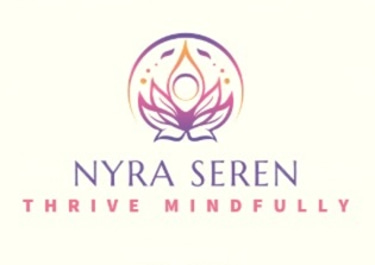
Escaping the Comfort Trap: Unlock Your Hidden Potential
How to Break Free from Routine, Overcome Fear, and Achieve Personal and Professional Growth
10/1/20253 min read
We all love comfort. Routines, familiar surroundings, and predictable outcomes provide a sense of security that our minds and bodies crave. But comfort, while reassuring in the short term, can quietly act as a barrier to personal growth, creativity, and fulfillment. The very habits and routines that make life feel safe can prevent us from exploring our true potential and discovering opportunities that lie just beyond the familiar.
Why We Stay Comfortable:
Humans are wired to favor stability, but the reasons we cling to comfort extend beyond biology. Society often praises those who follow predictable paths, while families and cultural norms reinforce safety over risk. On a personal level, social comparison can deceive us into believing we are doing well enough simply because others have it worse. This collective pressure fosters complacency and masks the untapped potential within each of us.
Understanding the Zones:
Psychologists describe three zones that influence learning and growth:
Comfort Zone: Familiar, safe, and predictable, but limiting.
Panic Zone: Overwhelming stress and fear that can immobilize decision-making.
Learning Zone: Where growth occurs. Challenges are manageable yet stimulating, expanding skills, resilience, and confidence.
Small Steps, Big Impact:
Growth doesn’t always require dramatic life changes. Incremental actions, when taken consistently, can have transformative effects. Whether it’s enrolling in a new course, speaking in public, taking on a new project, or trying an unfamiliar hobby, these actions expand our comfort boundaries. Over time, yesterday’s challenge becomes today’s competence, and the horizon of possibility broadens significantly.
Inspirational Real-Life Examples:
Rosa Parks: Her refusal to give up her bus seat was a courageous act that challenged societal norms and sparked the civil rights movement. Parks’ decision illustrates how standing firm against comfort and convenience can ignite transformative change.
Whitney Wolfe Herd: After leaving a secure position at a major dating app, she founded Bumble, facing uncertainty, competition, and public scrutiny. Her willingness to leave comfort and innovate led to a global platform that empowered women in dating and business.
Vincent van Gogh: Van Gogh abandoned the expectations of a conventional life and family to pursue painting. Despite financial hardship and repeated rejection, he continually experimented with styles and techniques, ultimately creating a lasting artistic legacy.
Albert Einstein: While working at the Swiss Patent Office, Einstein used his free time to explore radical ideas in physics. Leaving the comfort of intellectual anonymity allowed him to develop theories of relativity that revolutionized science.
Sara Blakely: The founder of Spanx, Blakely risked her stable job and invested her savings to start her company. Facing skepticism and failure, her perseverance and willingness to step beyond comfort resulted in a billion-dollar business.
Oprah Winfrey: From a challenging upbringing, Oprah moved beyond her early limitations and embraced opportunities in media. Hosting her own talk show and starting her production company required stepping into uncertainty and risk, transforming her into a global icon.
The Neuroscience of Growth:
Our brains are not static. They are remarkably adaptable, a phenomenon known as neuroplasticity. Neuroplasticity refers to the brain’s ability to reorganize itself by forming new neural connections throughout life, especially when faced with novel experiences or challenges. When we learn new skills, solve problems in unfamiliar contexts, or navigate situations outside our routine, the brain strengthens existing pathways and creates new ones, enhancing cognitive flexibility, memory, and creative thinking. Conversely, prolonged time spent in predictable, non-challenging environments can lead to synaptic pruning, where underused neural connections weaken, resulting in rigidity, reduced problem-solving ability, and a decreased capacity to adapt to change. In essence, stepping out of the comfort zone exercises the brain like a muscle. Every new challenge strengthens it, increasing resilience, adaptability, and the capacity for innovation.
Embracing Fear and Uncertainty:
Fear is a natural companion when venturing into new territory. Instead of avoiding it, we can treat fear as a signal of growth. Courage builds over time through consistent effort. Every small action that challenges comfort strengthens resilience, flexibility, and self-assurance, expanding the realm of what is possible.
Practical Steps to Expand Your Learning Zone:
Identify areas dominated by comfort, whether in work, relationships, or personal routines.
Set small, achievable weekly challenges to gradually stretch your limits.
Reflect on progress and celebrate even minor milestones.
Treat setbacks as lessons, not failures, to extract insights for the future.
Surround yourself with mentors, peers, or communities that encourage experimentation and risk-taking.
Maintain curiosity and view challenges as opportunities for discovery rather than threats.
Leaving the comfort zone is not about abandoning safety, it is about balancing security with growth. Beyond comfort lies your untapped potential: creativity, resilience, and capabilities waiting to be unlocked. By stepping intentionally into the learning zone, embracing challenges, and confronting fear, we open doors to opportunities and achievements that remain hidden within the familiar. True growth begins when you explore the unknown and discover the self you have yet to meet.
“Are you ready to step beyond the familiar, embrace the unknown, and unlock the potential that has been waiting for you all along?”
